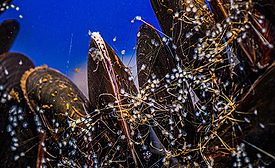Sustainability
Advancing Adhesives
Increasing the sustainability and functionality of adhesives can improve human life in myriad ways.
Read More
Market Trends
Construction Sector Remains Key Market for Silicone Sealants
Multiple trends are anticipated to help silicone sealants experience strong demand from the construction industry through 2027.
June 17, 2021
Deadline Nears for Adhesive and Sealant Council Annual Convention Presenter Abstracts
Any new technology, market intelligence, or timely topic relevant to the adhesive and sealant industry will be considered.
June 16, 2021
AkzoNobel Yacht Coatings Business Partners with Water Revolution Foundation
The Water Revolution Foundation is a not-for-profit organization that works to preserve the world’s oceans by helping the yacht industry drive down its environmental impact.
June 16, 2021
Covestro Receives JEC Innovation Award
Covestro’s polyurethane resins for wind rotor blades and its coating solutions for offshore wind turbines were included in the case for the award.
June 15, 2021
Dow to Build MDI Distillation and Prepolymers Facility in Texas
In coordination with the startup of a new MDI facility in Freeport, Dow will shut down the polyurethane assets at its La Porte site.
June 14, 2021
Huntsman Publishes 2020 Sustainability Report
This is Huntsman’s 10th published sustainability report since launching its corporate sustainability initiative in 2010.
June 8, 2021
The New Frontier of Green Construction: Creating a More Sustainable World through Mass Timber and Adhesives
Mass timber has become an increasingly popular alternative to minimize construction’s environmental impact, offering a renewable resource with a notably smaller carbon footprint.
May 27, 2021
3M State of Science Index: Public Trust in Science Continues to Grow
Science is heightening the world’s expectations for what is possible, according to the 2021 3M State of Science Index.
May 24, 2021
From the Editor
Adhesives and Sealants Help Brands Achieve the Complete Package
Brands are exploring sustainable packaging as a means of increasing their appeal to environmentally conscious consumers.
May 21, 2021
Keep the info flowing with our eNewsletters!
Get the latest industry updates tailored your way.
JOIN TODAY!Copyright ©2024. All Rights Reserved BNP Media.
Design, CMS, Hosting & Web Development :: ePublishing











